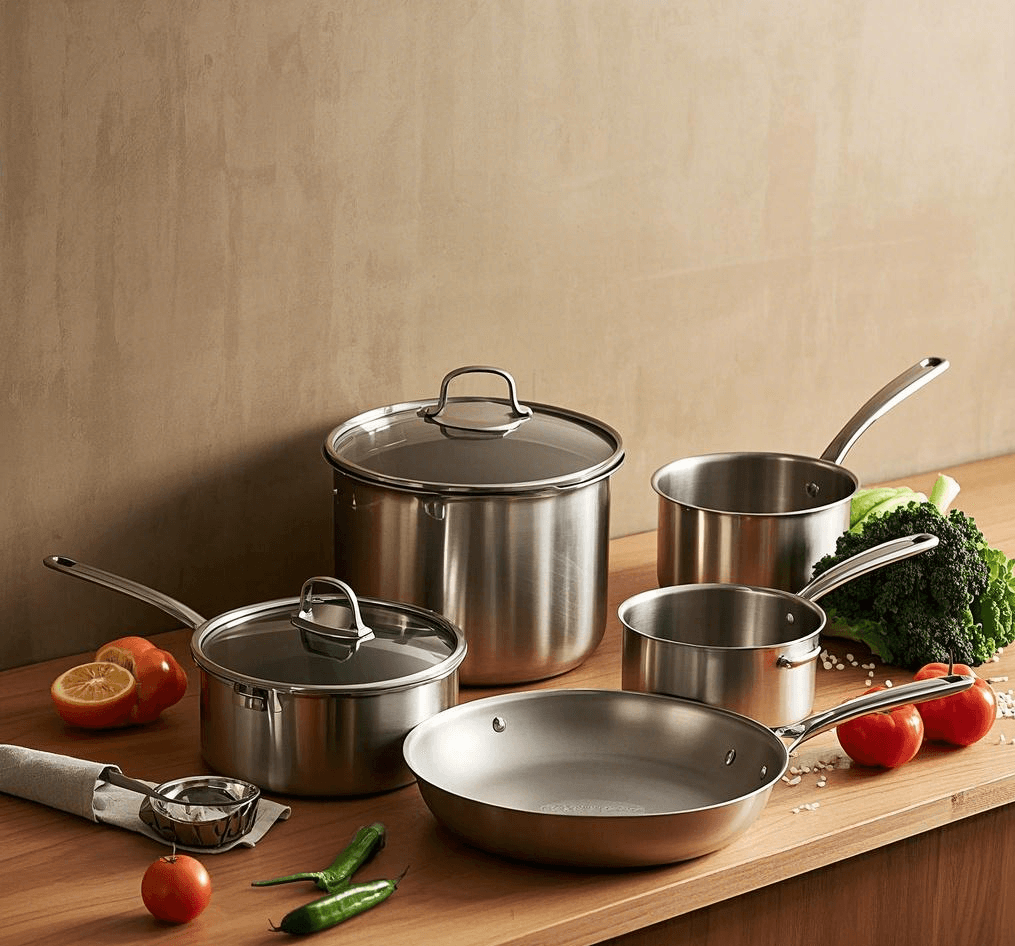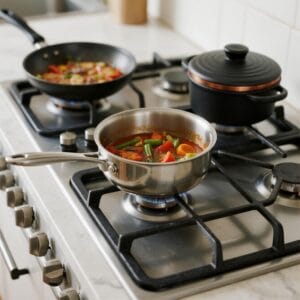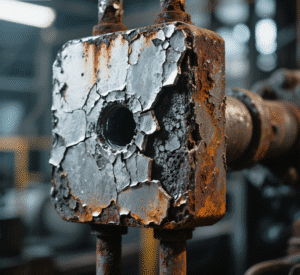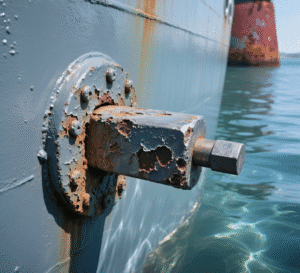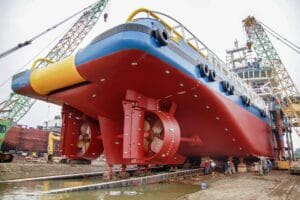Tired of cluttered cabinets full of pans you barely use? Want cookware that works hard for almost every meal and delivers reliable results every time? Let’s find your kitchen workhorse.
A high-quality 10-12 inch skillet or frying pan, especially one made from durable material like tri-ply stainless steel, is often the single most useful piece of cookware for its sheer versatility 1.
Choosing cookware is personal, but some pieces just get used constantly. As a long-time user myself, I truly understand the value of a good pan. Over the years, my trusty frying pans and woks have become indispensable tools in my kitchen. Since getting into the cookware materials business back in 2012, I’ve focused on tri-ply construction. My experience confirms it’s the ideal choice for high-performance cookware – it heats fast, distributes heat evenly, feels solid, and lasts for years. It just performs reliably, meal after meal. Let’s break down what makes certain cookware so useful.
What is the most useful pan for cooking?
Struggling to cook varied meals with limited pans? Need that one go-to pan that can handle breakfast, lunch, and dinner? Let’s identify the kitchen MVP (Most Valuable Pan).
For maximum versatility, a 10-12 inch skillet or frying pan is the most useful single pan for everyday cooking, capable of handling a wide range of techniques from frying to searing 1.
When we talk about "useful," we mean versatile and frequently needed. While specialized pans have their place, one pan consistently stands out.
The Indispensable Skillet/Frying Pan
This is the workhorse. A good skillet (often called a frying pan) with sloped sides is perfect for:
- Frying: Eggs, pancakes, bacon.
- Sautéing: Vegetables, aromatics.
- Searing: Meats like chicken breasts, steaks, or fish fillets to get a beautiful crust. Tri-ply stainless steel excels here due to its even heating and ability to handle high temperatures 2.
- Pan Sauces: Building flavor after searing.
A size between 10 and 12 inches offers enough space for most tasks without being too bulky.
Other Key Workhorses
While the skillet is arguably number one, two others are incredibly useful:
- Saucepan: Essential for anything liquid – boiling water for pasta or vegetables, heating soups, making sauces 1. A 2-3 quart size is very practical.
- Stockpot: Needed for larger batches like pasta, soups, stews, or boiling corn on the cob 1. A 5-7 quart size is common.
- Wok (My Personal Essential): For stir-frying, deep-frying, and steaming, especially in Asian cooking, a wok’s high, sloped sides are invaluable. Like my favorite frying pans, a quality wok, perhaps using tri-ply material for better heat, is a must for me.
| Pan Type | Primary Uses | Why It’s Useful |
|---|---|---|
| Skillet/Frying Pan | Frying, Sautéing, Searing, Pan Sauces | Highly versatile for daily tasks 1 |
| Saucepan | Boiling Liquids, Heating Soups, Making Sauces | Essential for liquid-based cooking 1 |
| Stockpot | Large Batches (Pasta, Soup, Stew, Boiling) | Necessary for volume cooking 1 |
| Wok | Stir-frying, Deep-frying, Steaming | High heat cooking, large surface |
What cookware do most chefs prefer?
Ever wonder what the professionals rely on in demanding restaurant kitchens? Want cookware that performs reliably under pressure? Discover the materials trusted by chefs.
Chefs often prefer durable, high-performance cookware like clad stainless steel (e.g., tri-ply), carbon steel, and sometimes copper or cast iron for specific tasks, valuing heat control, responsiveness, and longevity 2 3.
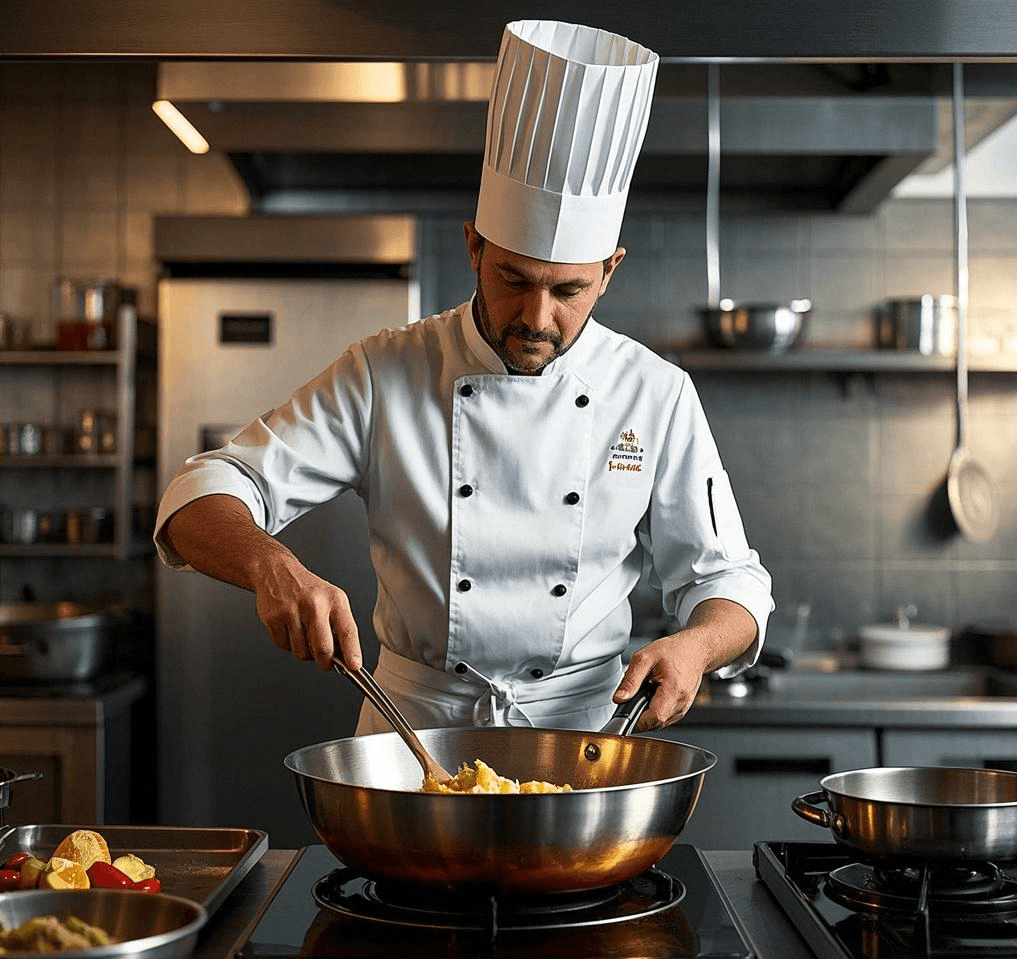
Professional kitchens are tough environments. Cookware needs to withstand heavy use, high heat, and rapid temperature changes while delivering consistent results.
Performance Under Pressure
Chefs prioritize cookware that offers:
- Excellent Heat Control: The ability to heat up quickly, distribute heat evenly, and respond rapidly to temperature changes is crucial. This prevents scorching and allows for precise cooking 3. Tri-ply’s aluminum core helps significantly here 2 4.
- Durability: Pans must resist warping, denting, and breaking under constant, intense use 3. Stainless steel layers provide this strength 4.
- Non-Reactivity (Often): For general use, chefs prefer materials that won’t react with acidic ingredients (like tomatoes or wine) and alter flavors. Stainless steel is excellent for this 2 3.
Common Materials in Pro Kitchens
Based on performance needs, chefs commonly use:
- Clad Stainless Steel (like Tri-Ply): This is a true kitchen workhorse. It offers great heat distribution, durability, versatility across cooking methods and heat sources (including induction), and is relatively easy to maintain 2 3 5. It’s my preferred material and the foundation of our business.
- Carbon Steel: Similar to cast iron but lighter and more responsive. It heats quickly, handles very high temperatures well, and develops a natural non-stick seasoning over time. Popular for woks and skillets.
- Copper: Offers the best heat conductivity and responsiveness, prized for delicate sauces or candy making 3. However, it’s expensive, heavy, requires maintenance (polishing), and is reactive (usually lined with stainless steel or tin) 3.
- Cast Iron: Valued for its incredible heat retention (great for searing) and durability 6. Often used for specific tasks rather than all-purpose cooking due to its weight and slower heating 2.
| Material | Chef’s Reason | Potential Drawback |
|---|---|---|
| Clad Stainless Steel | Versatile, Durable, Even Heat, Non-Reactive 2 3 | Can stick without proper heat/oil |
| Carbon Steel | High Heat, Responsive, Develops Seasoning | Needs Seasoning, Can Rust |
| Copper (Lined) | Best Heat Control & Responsiveness 3 | Expensive, High Maintenance 3 |
| Cast Iron | Excellent Heat Retention, Searing, Durable 6 | Heavy, Slow to Heat/Cool 2 |
What is the healthiest type of cookware to use?
Worried about chemicals leaching into your food from your pans? Want peace of mind knowing your cookware is safe for your family? Let’s focus on the materials considered best for health.
The healthiest cookware materials are generally stable and non-reactive, such as stainless steel, cast iron, glass, 100% ceramic, and titanium, which don’t leach harmful substances or rely on potentially toxic coatings 6.
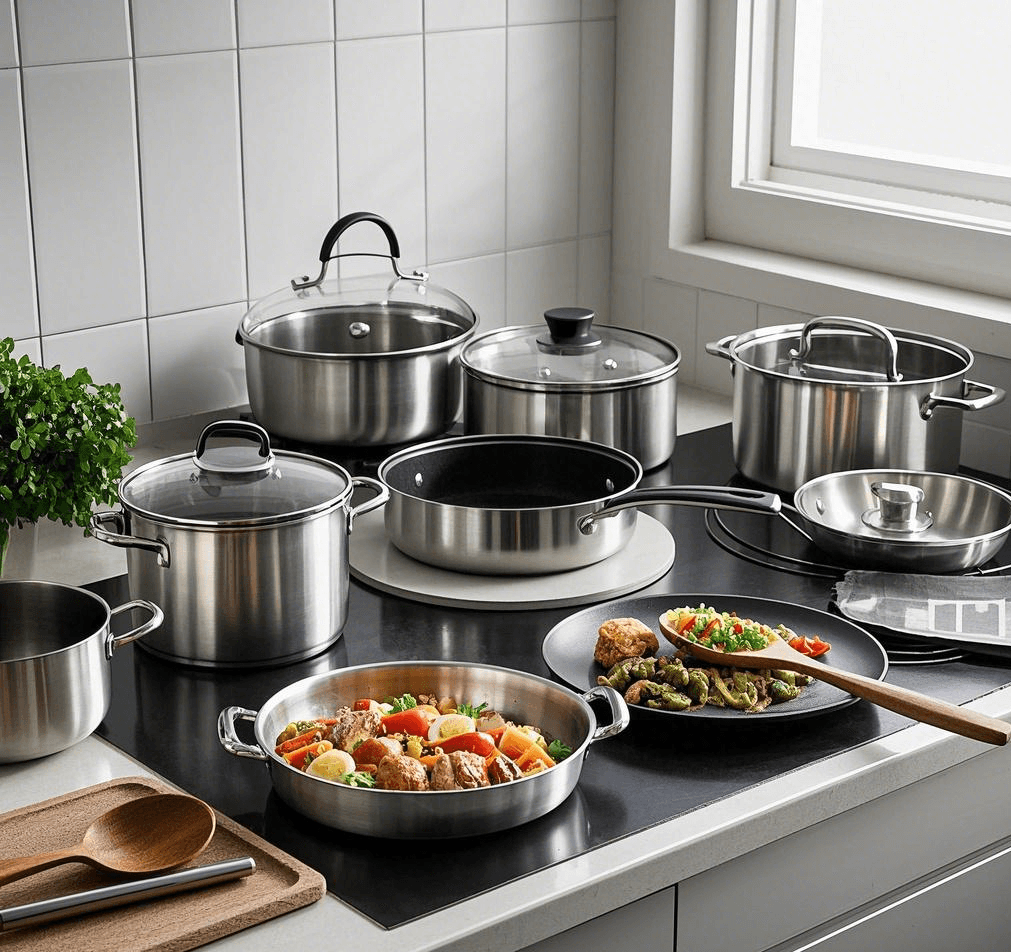
Health is a major factor when choosing cookware. The goal is to use materials that won’t interact negatively with your food, especially when heated or used with acidic ingredients.
Why Material Matters for Health
Concerns often center around:
- Chemical Leaching: Some materials can release substances into food, especially if scratched or overheated.
- Coatings: Traditional non-stick coatings (like PTFE or Teflon) raised concerns about PFOA/PFAS, especially when damaged or overheated. Newer ceramic coatings aim to avoid these specific chemicals 6.
- Reactivity: Some metals (like unlined copper or aluminum) can react with acidic foods, potentially altering taste and leaching metal.
Top Choices for Healthy Cooking
These materials are widely regarded as safe and healthy options:
- Stainless Steel (including Tri-Ply): Durable, versatile, and non-reactive 2 6. High-quality stainless steel (like 18/8 or 18/10) is a safe bet for all types of cooking. Tri-ply construction offers these benefits plus excellent performance 3.
- Cast Iron (Bare or Enameled): Extremely durable and non-reactive (enamel) or develops a safe, natural non-stick surface (bare, when seasoned) 6. Bare cast iron can even add small amounts of dietary iron to food.
- Glass: Completely inert and non-reactive, but primarily used for baking or storage, less common for stovetop cooking due to thermal shock risk.
- 100% Ceramic: Different from ceramic coatings, solid ceramic cookware is inert but less common and can be prone to chipping or cracking.
- Titanium: Very strong, lightweight, extremely non-reactive and non-toxic. Often used in high-end cookware or camping gear.
- Quality Ceramic Coatings: Brands like GreenPan or Caraway offer non-stick surfaces free from PFOA and PFAS 6. Ensure the brand explicitly states this. Remember, the coating’s lifespan is limited.
| Material | Health Benefit | Considerations |
|---|---|---|
| Stainless Steel | Non-reactive, Durable 6 | Quality matters (e.g., 18/10) |
| Cast Iron | Non-reactive (enamel), Adds Iron (bare) 6 | Heavy, Needs seasoning (bare) |
| Glass | Inert, Non-reactive | Breakable, Thermal shock risk |
| 100% Ceramic | Inert | Can be brittle, Less common |
| Titanium | Extremely Inert, Non-toxic | Often expensive |
| Ceramic Coating | PFOA/PFAS-free option 6 | Coating wears out over time |
What pans to stay away from?
Bought cheap pans that warped, scratched, or peeled quickly? Worried about potential safety risks from damaged or low-quality cookware? Learn what characteristics signal a pan to avoid.
Stay away from pans with visibly scratched, chipped, or peeling non-stick coatings, heavily damaged reactive metals like aluminum or copper, and extremely thin, flimsy pans prone to warping and hotspots.

It’s less about banning entire material types (except those with known toxins like PFOA) and more about avoiding cookware that is damaged or poorly constructed, as this poses performance and potential safety risks.
Red Flags in Cookware
Here’s what to watch out for:
- Damaged Non-Stick Coatings: Whether traditional PTFE (Teflon) or newer ceramic types, once the coating is compromised (scratched, peeling, bubbling), the pan’s non-stick ability is reduced, and there’s a risk of ingesting coating flakes. Older coatings containing PFOA/PFAS are a particular concern when damaged or overheated. It’s best to discard pans with significant coating damage.
- Heavily Scratched Reactive Metals: Bare aluminum and copper are reactive with acidic foods. While generally safe in good condition or when anodized/lined, deep scratches can increase reactivity and potential metal leaching. Stainless steel lining in copper pans or anodization in aluminum pans mitigates this.
- Thin, Flimsy Construction: Extremely cheap pans often use thin-gauge metal. These tend to:
- Warp Easily: The bottom becomes uneven, leading to instability on the cooktop and poor heat contact.
- Develop Hotspots: Heat isn’t distributed evenly, causing food to burn in some spots and remain undercooked in others.
- Lack Durability: They simply don’t last. Look for pans with a solid feel and preferably a thicker, flat base, like those found in quality tri-ply construction 4.
Focus on Quality and Condition
Instead of focusing solely on material type, pay attention to the quality of construction and the pan’s current condition. A high-quality pan made from safe materials, even if more expensive initially, will perform better, last longer, and provide a safer cooking experience than a cheap, damaged alternative. This is why I’ve stood by tri-ply since 2012 – it offers that reliable quality.
| Problem Characteristic | Why Avoid It | Better Alternative |
|---|---|---|
| Peeling/Scratched Non-Stick | Reduced function, potential flake ingestion, chemical risk (older) | Discard, replace with quality pan |
| Deep Scratches (Aluminum/Copper) | Increased reactivity with acidic foods, potential leaching | Stainless steel, Cast Iron, Glass |
| Thin Base / Flimsy Build | Warping, Hotspots, Poor durability, Uneven cooking | Thicker gauge metal, Clad (Tri-Ply) |
Conclusion
A versatile skillet, especially durable tri-ply stainless steel, is the most useful pan. Chefs prefer performance materials like clad steel or carbon steel. Choose healthy, non-reactive materials and avoid damaged pans.
Identifies frying pan/skillet, saucepan, and stockpot as the most versatile/essential pieces for everyday cooking in a tri-ply set. Source:
https://triplycircletitanium.com/how-can-consumers-maximize-their-investment-by-choosing-essential-pieces-in-a-triply-cookware-set/↩ ↩ ↩ ↩ ↩ ↩ ↩Highlights tri-ply’s suitability for high-heat (searing, frying), even heating, durability, versatility across cooktops, and non-reactivity compared to cast iron or aluminum. Source:
https://triplycircletitanium.com/which-cookware-material-is-better-for-high-heat-cooking/↩ ↩ ↩ ↩ ↩ ↩ ↩ ↩ ↩Discusses the role of materials in the cooking experience, mentioning stainless steel’s versatility, copper’s heat conductivity, non-stick’s convenience, and highlights tri-ply’s well-rounded performance for home cooks and chefs. Source:
https://triplycircletitanium.com/choosing-the-best-cookware-material-which-option-fits-your-cooking-style/↩ ↩ ↩ ↩ ↩ ↩ ↩ ↩ ↩ ↩ ↩Mentions tri-ply construction (stainless-aluminum-stainless), its advantages in even heat distribution, heat retention, durability, versatility, and flat base design for efficiency. Source:
https://triplycircletitanium.com/which-cookware-type-is-more-energy-efficient-for-cooking/Discusses tri-ply’s energy efficiency due to heat conductivity, retention, versatility across cooktops (including induction), and durability. Source:
https://triplycircletitanium.com/which-cookware-type-is-more-energy-efficient-for-cooking/↩Mentions stainless steel, cast iron, and ceramic-coated pans (like GreenPan, Caraway) as great non-toxic/healthy choices. Source:
https://triplycircletitanium.com/what-is-the-healthiest-cookware-to-use/andhttps://triplycircletitanium.com/which-cookware-material-is-healthiest-for-your-lifestyle/(which also includes titanium). ↩ ↩ ↩ ↩ ↩ ↩ ↩ ↩ ↩ ↩

